2D Shapes Teaching Resources
Bring dimension to 2D shapes for elementary students with printable worksheets, digital activities, math games and more — created by teachers for teachers!
This comprehensive collection of teaching resources includes editable curriculum-aligned lessons on two-dimensional shapes, all ready to be printed and used in the classroom. Explore the entire collection to find educational games, geometric activities, posters and vocabulary word wall cards to assist your students when they are learning to identify 2D figures by their names and their attributes.
Teaching this part of the math curriculum for the first time in a while? Read on for a primer from the teachers on the Teach Starter team.
What Are 2D Shapes?
Two-dimensional shapes, or 2D shapes, are shapes that have only length and width, but no depth. Each of these geometric shapes has its own unique characteristics and properties, such as the number of sides, the types of angles and the relationship between the sides and angles.
For example, a square has four equal sides and four right angles, while a circle has no sides and no angles.
Teaching about 2D geometric shapes is crucial in those early primary grades as these are the building blocks of more complex geometric concepts. Understanding them is an important foundation for developing spatial reasoning skills. It will also lay the groundwork for learning about symmetry, angles, perimeter and area, among other geometry and measurement concepts.
2D Shapes — A Kid-Friendly Definition
Looking to provide a simple definition for your primary-grade students? Here's a kid-friendly definition you can use:
A 2D shape is a flat shape that has only two dimensions — length and width. When something is two-dimensional, it's flat, like a drawing or a picture on a piece of paper.
Understanding 2D shapes is important because it helps us recognize and describe the shapes we see around us, and it can also help us with math and other subjects.
2D Shape Examples
A definition is a good start, but providing concrete examples will help students begin to wrap their heads around these two dimensional-objects!
Let's look at some common examples of 2D shapes that we teach in elementary school:
Square
A square is a 2D shape with four straight sides that are all equal in length and four right angles. It is a type of rectangle and a type of parallelogram.
Rectangle
A rectangle is a 2-dimensional shape that has four straight sides. Unlike a square, a rectangle has two sides that are longer than the other two. It has four right angles and opposite sides that are parallel and equal in length.
Parallelogram
Like a rectangle and square, the parallelogram has four sides and is considered a 2D shape. The four straight sides of a parallelogram are parallel to each other. Opposite sides of a parallelogram are equal in length, and opposite angles are equal in measure. Squares, rectangles, and rhombuses are all examples of parallelograms.
Trapezoid
A trapezoid is a quadrilateral shape with two parallel sides and two non-parallel sides. The parallel sides are called the bases of the trapezoid, and the non-parallel sides are called the legs. Even though a trapezoid has four sides, it is not a parallelogram!
Triangle
A triangle is a two-dimensional shape that has three straight sides and three angles. The angles of a triangle always add up to 180 degrees.
Circle
A circle is a 2D geometric shape that is round and has no straight sides. It is defined as the set of all points in a plane that are at a fixed distance (called the radius) from a single point (called the center).
Ellipse
An ellipse is a 2D shape that is similar to a circle, but its shape is stretched out or elongated. It is defined as the set of all points in a plane whose distances from two fixed points (called the foci) add up to a constant value.
Pentagon
A pentagon is a 2D shape that has five straight sides and five angles. The word "pentagon" comes from the Greek words "penta" (meaning "five") and "gonia" (meaning "angle"). Each angle of a regular pentagon measures 108 degrees, and the sum of the angles in a pentagon is 540 degrees.
Hexagon
A hexagon is a 2D shape that has six straight sides and six angles. Each angle of a hexagon measures 120 degrees, and the sum of the angles in a hexagon is 720 degrees. Snowflakes are a common example of hexagons found in nature, and so is the honeycomb!
Rhombus
A rhombus is a 2D shape with four straight sides that are all equal in length. It is a type of parallelogram, and it has opposite angles that are equal in measure.
Octagon
An octagon is an eight-sided 2D shape. A stop sign is an octagon that students might recognize from seeing it along the road on the way to school.
Quadrilateral
A quadrilateral is a 2D shape with four sides and four angles. The sum of the interior angles of a quadrilateral is always 360 degrees. The following are all examples of quadrilaterals:
- Square
- Rectangle
- Parallelogram
- Trapezoid
- Rhombus
What Are Polygons?
Many of the 2D shapes that students learn about are polygons.
A polygon is a 2D shape that has three or more straight sides and angles. Polygons can have any number of sides, but they must be straight, and they must not cross each other.
The word "polygon" comes from the Greek words "poly" (which means "many") and "gonia" (which means "angle").
Here are some common examples of polygons:
- Triangles
- Squares
- Rectangles
- Pentagons
- Hexagons
- Octagons
A circle and an ellipse are both 2D shapes, but they are not polygons. They have a curved shape, while polygons consist of a closed structure with sides.
2D Shapes in Kindergarten
Teaching kindergarten this year? You'll find circles, squares, and more are part of your curriculum.
Introduce your class to these basic 2D shapes and help them learn to identify them by their characteristics and properties, such as the number of sides, corners or curves.
At this stage, students should learn the names of these shapes and be able to draw or trace them. They also might be taught to sort and classify shapes based on their attributes.
2D Shapes Throughout Elementary School
As students leave the primary grades and develop their math skills, they will learn about the relationships between different 2D shapes, such as:
- How a rectangle is made up of two congruent squares
- How a square can be divided into two congruent rectangles
- How to measure different features of shapes
- Learning that shapes in different categories (e.g., rhombuses, rectangles, and others) may share attributes (e.g., having four sides), and the shared attributes can define a larger category (e.g., quadrilaterals).
- Classify two-dimensional figures in a hierarchy of sets and subsets using graphic organizers based on their attributes and properties.
- Plus Plan
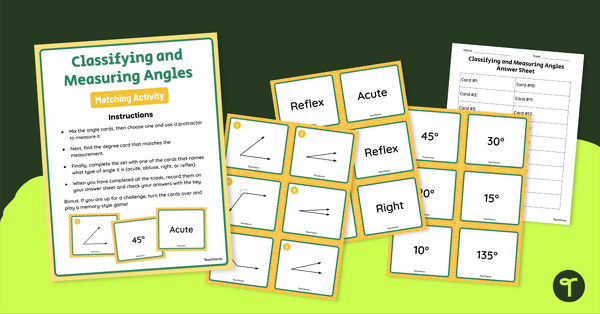
Classifying and Measuring Angles Activity
Introduce this classifying and measuring angles matching activity to your students to give them engaging, hands-on practice with key geometry concepts.
- Plus Plan
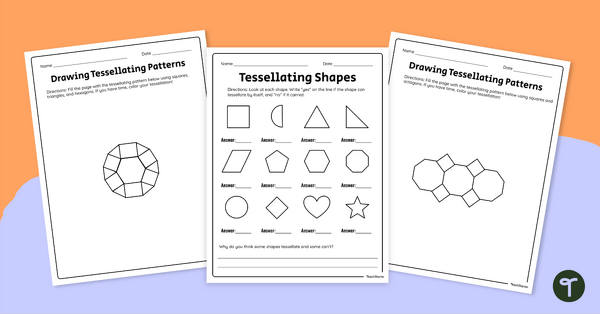
Tessellating Shapes Worksheet Set
Download this tessellating shapes worksheet set to introduce your students to the beauty of tesselations.
- Plus Plan
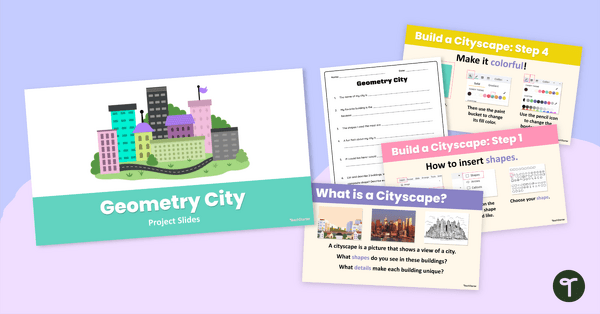
Geometry City Project
Engage your learners with this cross-curricular geometry city project that invites them to build a digital city all their own.
- Plus Plan

Spatial Reasoning Worksheets
Share these spatial reasoning worksheets with your students to help them master spatial relationship and composite shape standards.
- Plus Plan
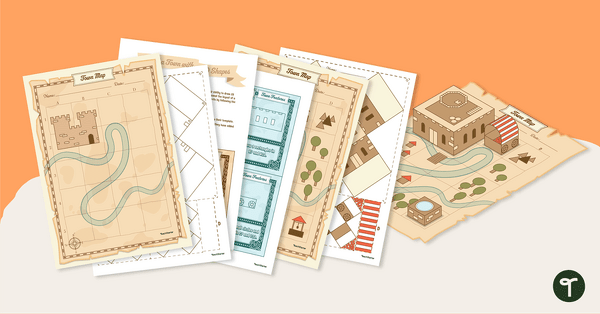
Ye Olde Geometry Town Project
Build a charming medieval town with our Ye Olde Geometry Town project, designed to give your students engaging hands-on practice with multiple geometry and social studies standards.
- Plus Plan
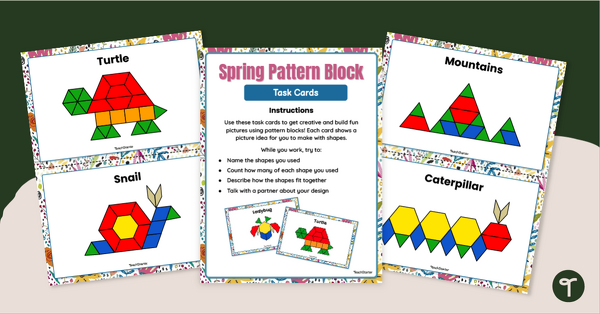
Pattern Block Design Cards
Build shape recognition and have fun building composite figures with our printable Springtime Pattern Block Design Cards.
- Plus Plan
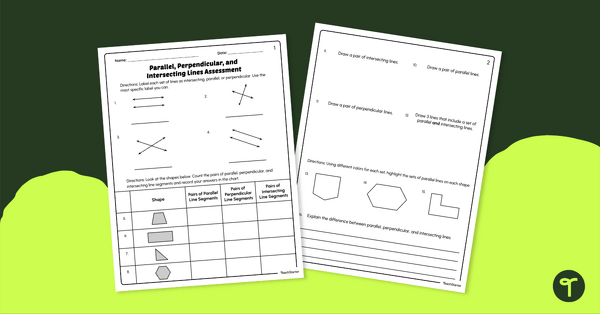
Parallel and Perpendicular Lines Test
Administer this parallel and perpendicular lines test to assess your students’ ability to identify types of line pairs in a variety of settings.
- Plus Plan
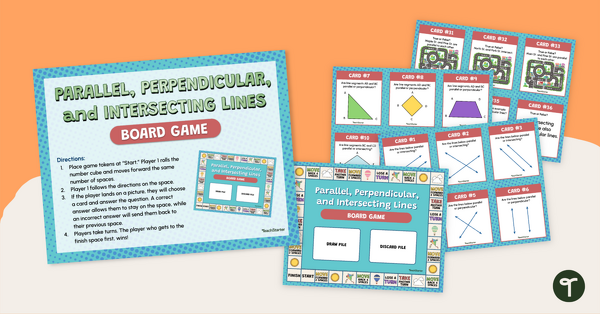
Perpendicular and Parallel Lines Activity — Board Game
Play this perpendicular and parallel lines activity with your students to give them practice identifying line types in a variety of settings.
- Plus Plan
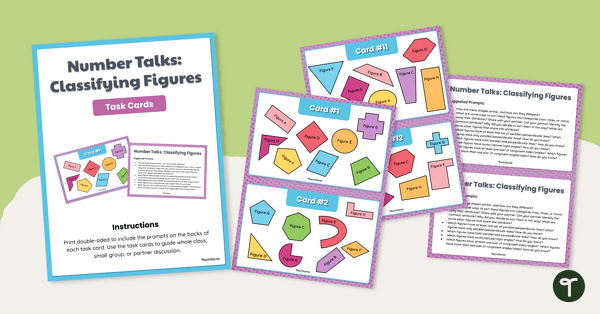
Classifying 2 Dimensional Shapes Number Talk Task Cards
Spark discussion with these classifying 2 dimensional shapes number talk task cards
- Plus Plan
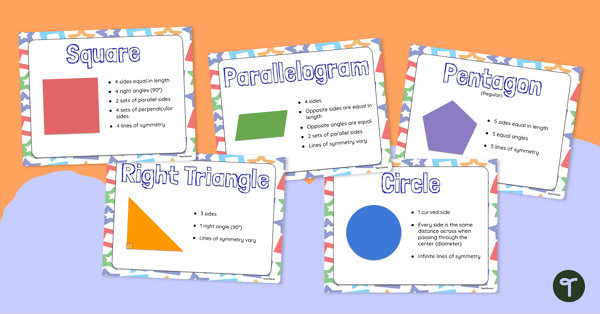
2D Shapes Anchor Chart Set
Hang this 2D shapes anchor chart set in your classroom to give students an easy reference for the attributes of two dimensional shapes.
- Plus Plan
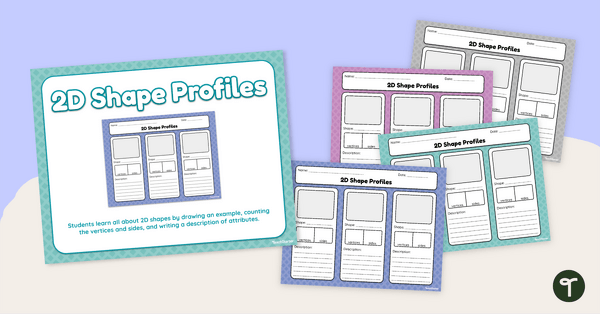
Attributes of Shapes Templates
Teach your students attributes of shapes by having them complete these 2D shape profiles that have many uses.
- Plus Plan
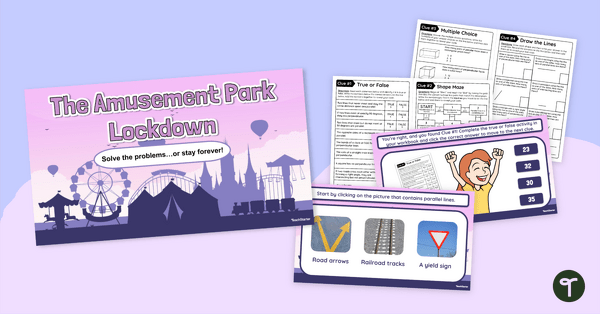
Parallel and Perpendicular Lines Activity — Escape Room
Engage your students with this parallel and perpendicular lines activity that encourages cooperation and problem solving to escape!
- Plus Plan
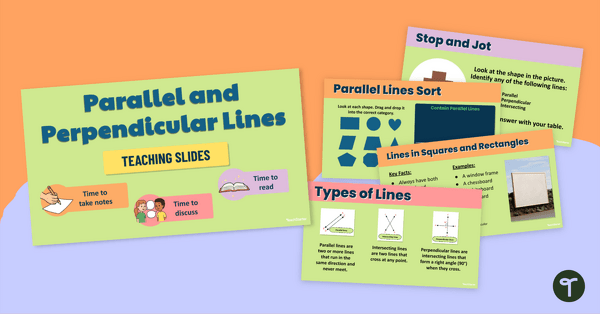
Parallel and Perpendicular Lines PPT — Teaching Slides
Download this parallel and perpendicular lines PPT to engage your students as you teach them about different line types!
- Plus Plan
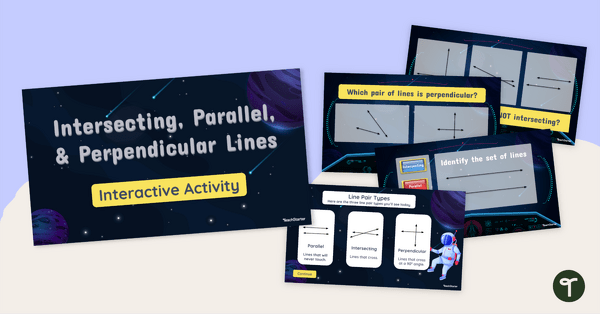
Intersecting, Parallel, and Perpendicular Interactive Games
Play parallel and perpendicular lines interactive games in your classroom to spice-up your geometry lessons!
- Plus Plan

Parallel and Perpendicular Lines in 2D Shapes Sorting Activity
Identify parallel and perpendicular lines in 2D shapes in this engaging sorting activity!
- Plus Plan

Identifying Parallel and Perpendicular Lines in Shapes Worksheet Pack
Present this parallel and perpendicular lines in shapes worksheet pack to your students to give them practice identifying attributes of 2D shapes.
- Plus Plan

Parallel and Perpendicular Lines Game — Sorting Activity
Play this parallel and perpendicular lines game in your classroom to give students practice sorting lines into intersecting, parallel, or perpendicular line categories.
- Plus Plan

Fire Truck Printable Math Worksheets (PK-K)
Build number and 2D shape identification skills with our Fire Truck Printable Math Worksheets for Pre-K and Kindergarten.
- Plus Plan
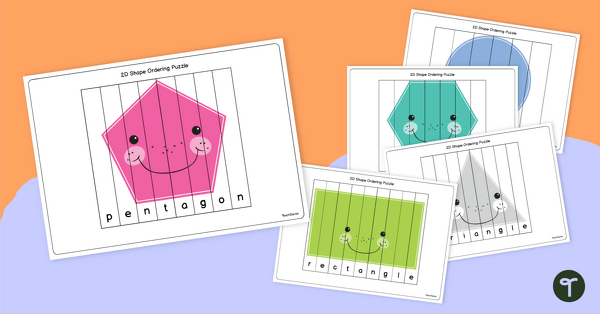
2D Shapes Puzzle Pack
Use these 2D shape puzzles to help familiarise your students with the most common two-dimensional shapes.
- Plus Plan
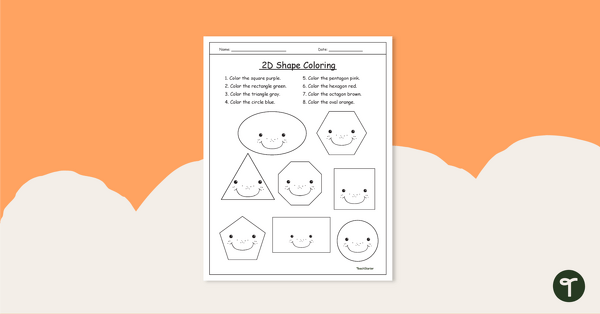
Identify and Color 2D Shapes Worksheet
Use this 2D shapes worksheet to help your students identify 8 of the most common two-dimensional shapes.
- Plus Plan
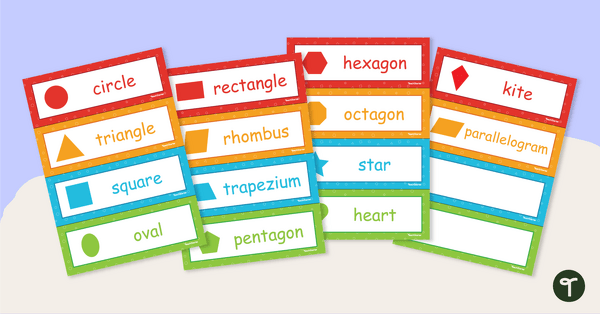
2D Shapes Flashcards
Use these 2D shapes flashcards to help familiarize your students with the most common two-dimensional shapes.
- Plus Plan
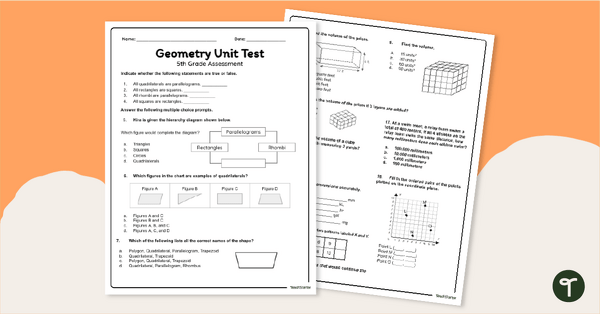
5th Grade Geometry Test
Assess your students' skills with quadrilaterals, coordinate grids, and volume of solid figures using a printable 5th Grade Geometry Test.
- Free Plan
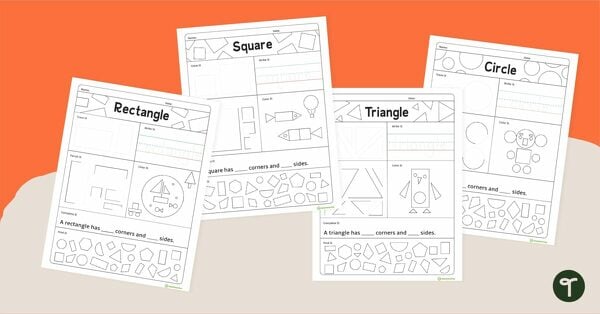
Free Shapes Worksheets for Kindergarten
Print your free Shapes Worksheets for kindergarten to practice shape identification.
- Plus Plan
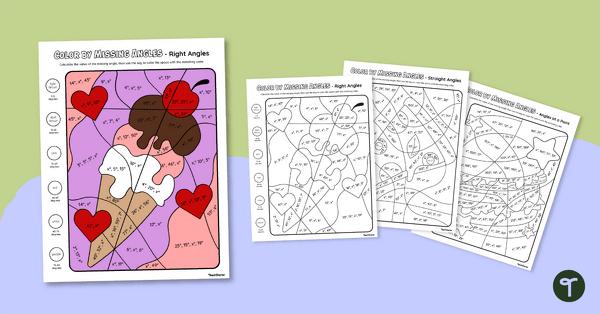
Color by Missing Angles – 4th Grade Math Worksheets
Get students to find the size of missing angles on right angles, straight angles and angles at a point with this 4th grade math worksheet with a difference!
- Plus Plan

Calculating Missing Angles Interactive Activity
Get your students to find missing angles with this interactive game perfect for 4th grade math lessons.
- Plus Plan
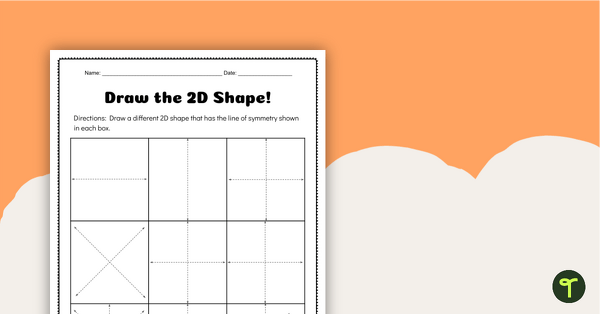
Draw the 2D Shape! Worksheet
Use this single-page symmetry worksheet to spark students’ creativity, as they think of and draw shapes which fit the provided lines of symmetry.
- Plus Plan

Sorting Symmetrical Shapes Worksheets
Use this simple but effective symmetry worksheet to reinforce the concepts of symmetrical and asymmetrical shapes with your Fourth Grade students.
- Plus Plan
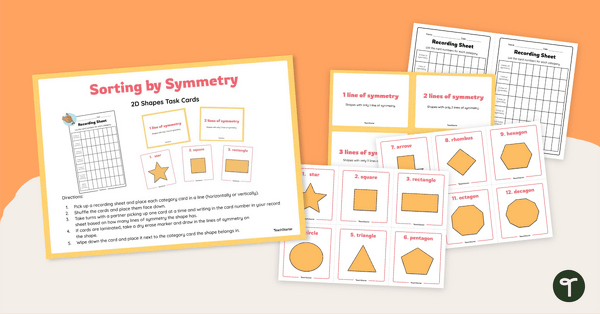
Sorting by Symmetry: 2D Figure Task Cards
Help students practice sorting 2D shapes by the number of lines of symmetry using this fun set of mathematics sorting cards.
- Plus Plan
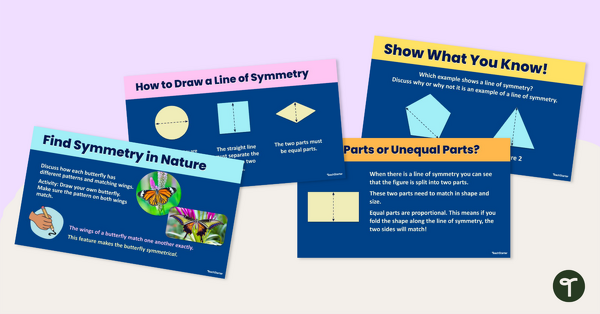
Lines of Symmetry Teaching Slides
Introduce your students to the concept of lines of symmetry using this comprehensive and easy-to-understand 12-slide teaching presentation!
- Plus Plan
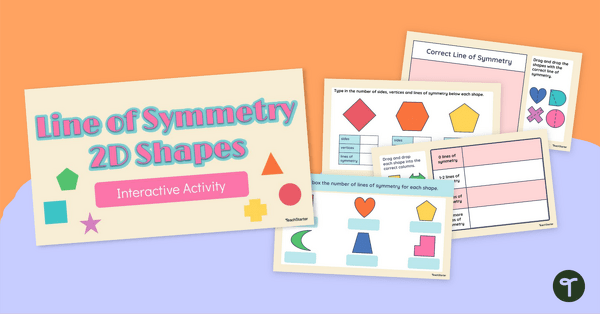
Line of Symmetry 2D Shapes Interactive Activity
Engage your students in a variety of interactive activities all focused on the line of symmetry for 2D shapes.
- Plus Plan
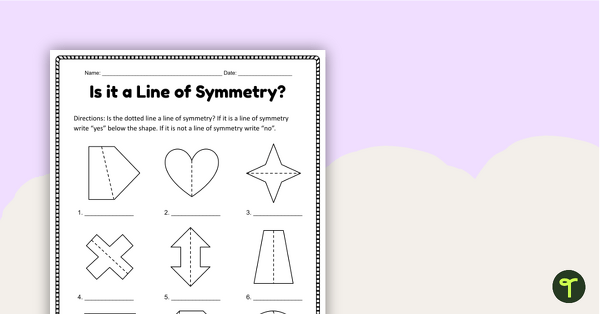
Is It a Line of Symmetry? Worksheets
Assign this lines of symmetry worksheet to your students to check their understanding of the existence of a line of symmetry on various 2D shapes.
- Plus Plan
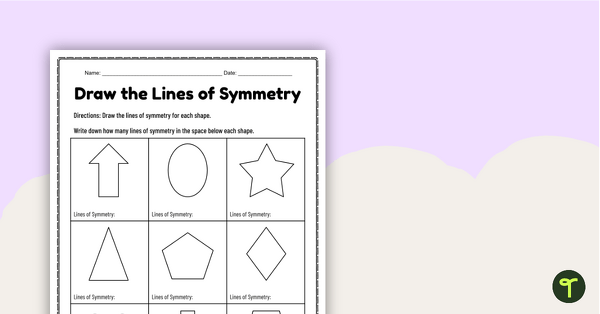
Draw The Line of Symmetry Worksheets
Use this lines of symmetry worksheet to help students practice drawing lines of symmetry on 2D shapes.